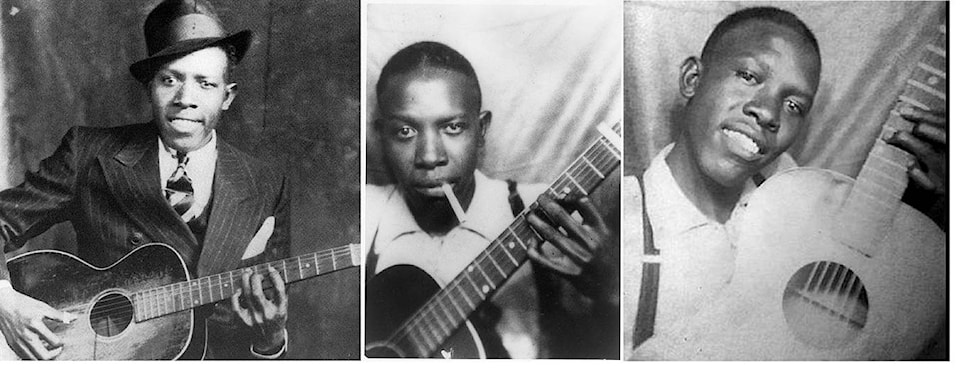One of the most important and influential musicians of the 20th Century (and his influence extends into the 21st Century) is also one of the most mysterious.
Robert Johnson, 1911-1938, was an itinerant Blues musician, composer, entertainer and guitar player from Mississippi who roamed the American south. He died at 27 years of age, under mysterious circumstances — foul play suspected.
There is more legend and myth to his story than history, starting with, of course, the apocryphal saw that he went down to the Crossroads one night to meet the Devil, who tuned his guitar for him, thus ensuring he would become one of the greatest guitar players of all time. In exchange, of course …
There are stories of the townsfolk lining up around the block when he came to town to play the local juke joint. He is understood to have had a repertoire of many hundreds of songs — not just in the Blues, but popular genres of the day, like Ragtime and Country.
Even so, he would have remained largely unknown to posterity, except that almost by chance he was asked to participate in two recording sessions (in 1936 and 1937), resulting in 29 songs — which would remain his entire recorded output. All of these songs except one are12-bar Blues in the Mississippi Delta style (the other is a ragtime).
A surge in global enthusiasm for the Blues in the 1960s led to a rediscovery of Johnson and his music, and he became, posthumously, an enormous influence on Blues, Rock and Country. He is generally regarded as the most influential Blues musician who ever lived, and one of the great American composers and songwriters of all time (Hank Williams comes to mind as Johnson’s parallel in the world of Country music). He is now understood to have revolutionized the finger-picking style of Blues guitar.
Up until this month, only two confirmed photographs of Johnson were known to exist. A formal studio portrait of him in his suit, smiling into the camera, and a close-up “self-portrait” taken in a do-it-yourself photo booth, showing the musician brooding, cigarette in mouth.
And now, this month, a third photograph has come to light of this iconic musician. This is a great event in music history.
The third confirmed photo is from the same Beale Street, Memphis, photo booth as the other photo. It shows a relaxed Johnson, brandishing his guitar, flashing a brilliant smile that shows what an easy-going, joyous personality he must have had.
All these years this photo was in the possession of Johnson’s step-sister, Annye Anderson, 15 years younger than Johnson, who this month is releasing a memoir of her life with her brother — “Brother Robert: Growing Up With Robert Johnson.”
How the world has changed over the past decades. Photographs, self-portraits, video and suchlike media are now so commonplace, accessible, and so easily created, distributed or published, that it strikes me that their individual and intrinsic value is lessened. Certainly, advances in digital and camera technology has greatly heightened what photography is capable of, and that it is more easily accessible to everyone is a good thing.
But I believe that because it is so easy, that our first instinct is to photograph or video a moment, 24 hours a day, means that photographs no longer have the the same ability to connect us to the past — especially the good old snapshot, that captured a moment of personal whimsy and gave it a magical life. An album of old family photographs, to me, has a lot more power than scrolling through one’s Facebook feed. It’s the analogue versus digital debate, I suppose. And time marches on.
Still, when an old crinkled photo is pulled out of a drawer, and suddenly a mythology is made real, it is a reminder that the past is still with us, that it is still very much alive, and it has a power we cannot ignore. Just like Robert Johnson’s music.
Barry Coulter is editor of the Cranbrook Townsman
